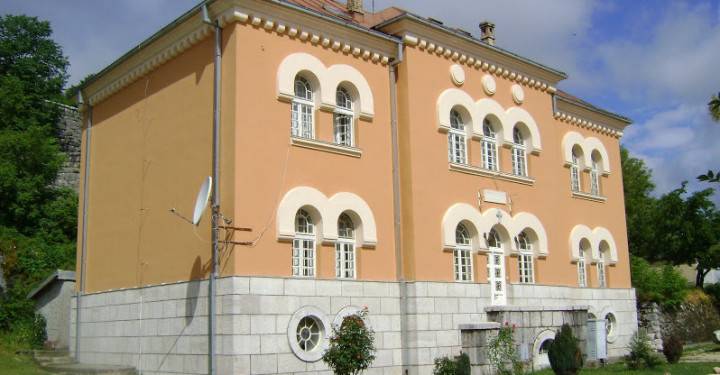
From the archive: 149 years since the beginning of classes in Cetinje Theological Seminary
149 years ago, on September 19, 1869, classes began in the seminary in Cetinje, while the ceremonial opening and blessing of the work took place the day before - on September 18. - Let us all be happy on this anniversary of the first secondary school in modern-day Montenegro, with this congratulation archpriest-stavrofor Gojko Perović, rector of the renovated seminary of St. Peter Cetinje, began the interview he gave for Radio Svetigora on this wonderful occasion.
Father Gojko recalls the prehistory of this event when, back in the time of Saint Peter of Cetinje and Njegoš's time, there were efforts and plans to open a school that would educate future priests. Although history cannot really process to what extent and what that school was like, there was still some basic education at the Cetinje Monastery, which produced candidates for the priestly service, where the candidates were taught church reading and chanting to some extent. Such a school was attended by Petar the Second Lovćenski Tajnovidac himself before his departure to Herceg Novi. Later, Njegoš founded primary schools, but there was always a need for a higher school than primary.
- As early as 1863, together with Archimandrite Nicifor (Dučić) from Herzegovina, Prince Nikola founded a temporary seminary, which worked for only one year due to lack of financial resources, but some documents related to that period of its work have been preserved. The founding of the Seminary in 1869 was preceded by Prince Nikola's trip to Russia, where he received significant financial aid from the Russian Court for the establishment of the Cetinje Seminary and the Girls' Institute in Cetinje. The practice, which still exists in Russian church schools, dictates that a special school be established for future priests, and that regency schools (schools for female conductors) be located nearby. Their basic purpose is to educate future priests and girls in the vicinity of the Shrine according to all church and boarding school rules, so that tomorrow the priest, from that nearby school, could choose his wife and form a church marriage with her, the father points out. Gojko.
He reminds that for a time this school worked as a seminary, and then as a theology-teacher school, which had some systemic connections with the Cetinje high school, which was founded twenty years after that and thus saw the beginning of the First World War, when its work and stopped.
-It renewed its work again in 1921 and for the first time under the name of the Seminary of St. Peter of Cetinje at the suggestion of Metropolitan Mitrofan Ban, who tried to restore the school and return it to Billiard, where it was before. From 1921 to 1943, the seminary worked in Billiard. In 1943, it stopped its work because the communist authorities forbade its restoration after 1945. From then until 1992, we did not have a seminary in Cetinje, except that in the 1960s and 1970s there was a monastic school in the Ostrog monastery, which was the shortest possible system according to where monks and future priests were trained for future service, says Father Gojko, speaking about the history of this church and educational institution.
He emphasizes that in 1991, Metropolitan Amfilohije (who was then on the throne of the Metropolitan of Montenegro and the Littoral), when a dozen people, including Metropolitan Danilo (Dajković), gathered to celebrate the 50th anniversary of graduation, inspired by that anniversary and meeting, and at their suggestion, submitted to the Holy Synod a proposal to rebuild the seminary in Cetinje. That happened in 1992.
- The Cetinje Theological Seminary renewed its work as one of the seminaries of the Serbian Orthodox Church, as it was in 1921. It is a secondary, five-year boarding school. By necessity, the work of the school is located in the building of the Church Court, which is located behind the Government House in Cetinje, because the Billiards was turned into a museum and it was not possible to work there. This school has been operating since 1992 and has produced over twenty generations, about 400 graduate theologians. Today they are priests, professors, two students are archpriests, and four more professors are archpriests of the Serbian Orthodox Church in all four corners of the world. One is a former professor, Bishop Kirilo in Argentina, and the other is a student of Bishop Siluan in Australia, Father Gojko reminds us of the importance of this spiritual nursery.
The rector of the seminary says that the school works in conditions that are not very appropriate.
- The school is located in the church court and the boarding school is at the other end of the city. We have a prefabricated house in which the dining room of the seminary is located. Although these are not exactly the best conditions, it all has its positive sides. This is exactly how the school is arranged, making this whole city like a boarding school, because the students are simply forced to walk around the city every day, they are not confined within four walls, as is the case in other schools of this type. We have thirteen professors and fifteen assistants. What makes this school successful and so far of high quality is the fact that its entire life revolves around the life of Saint Peter of Cetinje, the great sanctuary of the Cetinje monastery, and the monastery's services. We don't have the need, like some city seminaries, to improvise a liturgical life, but we actively participate in the liturgies, not only of the Cetinje Monastery but also of the entire Metropolis, says father Gojko Perović.
This year, ten students were enrolled in the first grade at the Cetinje Seminary. In all the theological seminaries of our Church, the number of first-year students has decreased compared, for example, to the case when the Cetinje seminary renewed its work in 1992 and enrolled seventy students and when there were years when it had up to 140 students.
- Now we have a total of 50 students, which is even good from the pedagogical point of view, considering this kind of boarding school life and the other obligations that students have. In this way, we professors can dedicate ourselves more to our students. All this will also be a matter of some other system solutions; whether seminaries will be included in the school system of the state they are in and in what way. Perhaps the seminary will begin to provide a wider education, as was the case with this school when it was a theological-teaching school from which, in addition to priests, future lawyers, historians, teachers... All in all, we are ready for anything options, the future is ahead of us. We have trained professors for some other plans and programs, Rector Perović points out.
Although it is the first secondary school in Montenegro, the Cetinje Seminary does not have state support.
- We don't need so much financial help from the state, although of course it would benefit us, as much as we need the state to behave in a principled manner. If he helps another religious school, the school of the Islamic community, the madrasa in Tuzi, then, on the level of principle, it would be logical to help the work of the oldest school in Montenegro. We pray to God that some basic things will be arranged properly, concluded the rector of the Cetinje seminary, archpriest-stavrophore Gojko Perović, in an interview he gave to Radio Svetigora on the occasion of the 149th anniversary of the beginning of classes at the seminary.
Slobodanka Grdinić, September 26, 2018
Source: SPC
PHOTOS
RELATED ARTICLES
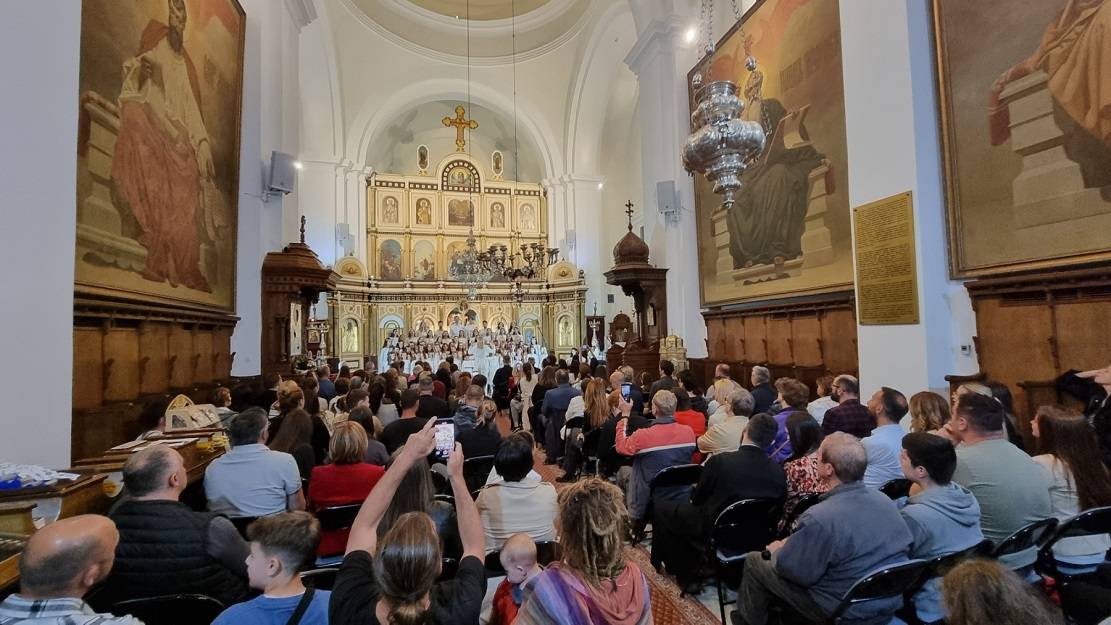
EASTER CONCERT OF THE CHILDREN'S, YOUTH AND SENIOR CHOIR OF THE SPD JEDINSTVO HELD
In the Church of St. Nicholas in Kotor, the Easter concert and another, to say...
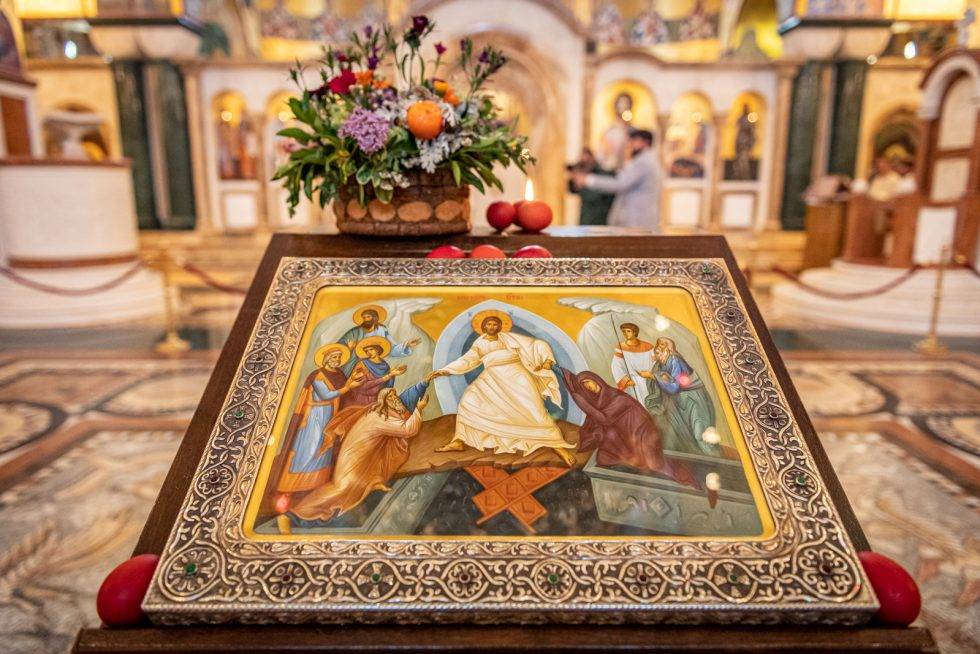
Easter Tuesday
Maundy Tuesday, Easter Tuesday (Greek: Τρίτη...
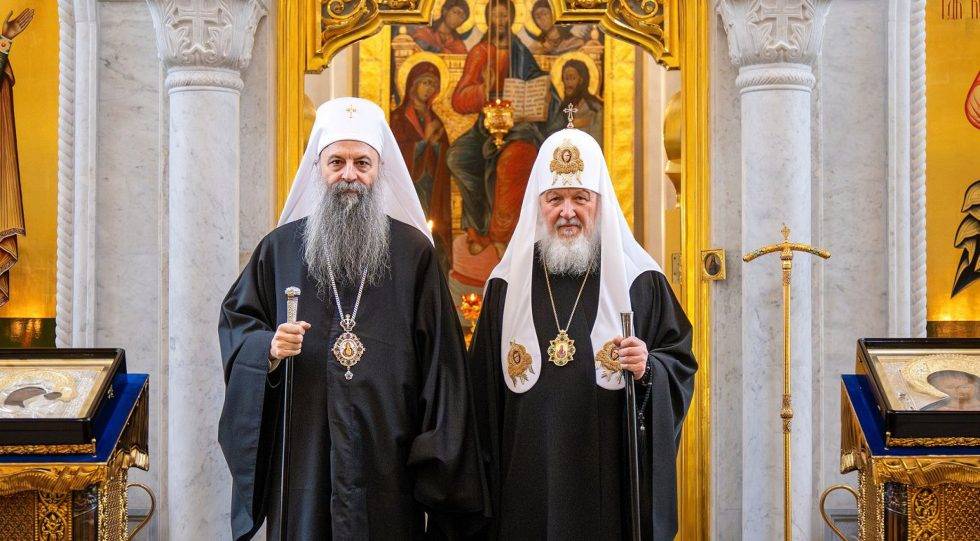
Serbian Patriarch Porfirije Travels to Moscow Today
Responding to the fraternal call of His Holiness Patriarch of Moscow and All...


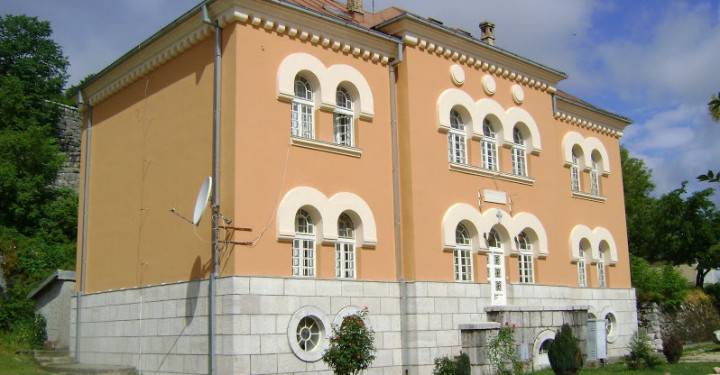

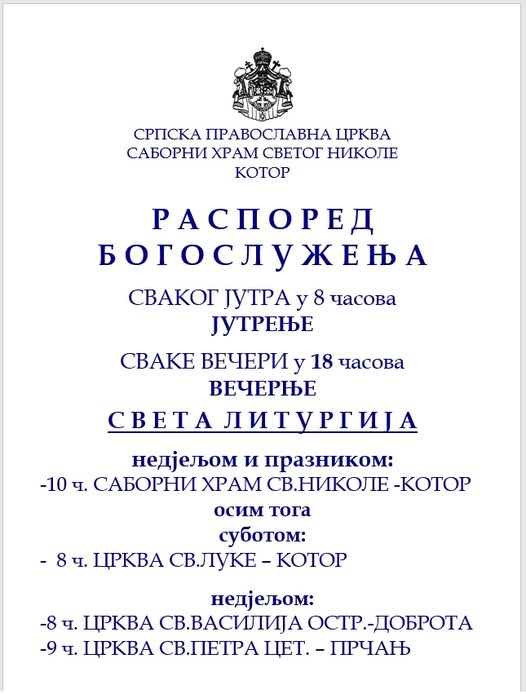
.png)